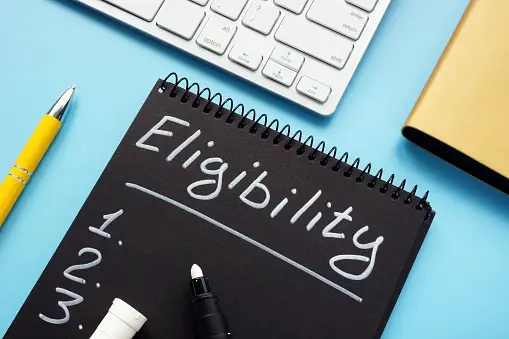Federal Grants for Your Sports Program.
As sports programs in various communities strive to encourage athletic engagement and foster talent, they often grapple with resource constraints. Aiding in this mission, federal grants have emerged as a vital lifeline, providing essential financial support to these initiatives.
Leveraging federal grants, programs can access funds for equipment, facilities, coaching, and more, thereby promoting inclusivity and nurturing young athletes.
This comprehensive guide will delve into various aspects of these grants, how to effectively apply, and describe some of the major federal grants available.
Why Federal Grants Matter
Federal grants for sports programs play an integral role in creating opportunities for young athletes, helping reduce the barriers related to cost, equipment, and facilities. They promote inclusivity by ensuring that individuals from all backgrounds can participate and excel in sports. The government’s commitment to supporting sports stems from its recognition of athletics’ potential to instill leadership skills, discipline, teamwork, and healthy habits.
How to Apply for Federal Grants
The application process for federal grants can be complex, often involving detailed proposals and strict deadlines. However, with meticulous planning, accurate data gathering, and a well-articulated vision, your sports program can secure these crucial funds.
1. Identify the Right Grant: Begin by researching the various grants available and identify those that align with your program’s needs and goals.
2. Understand the Guidelines: Each grant has specific eligibility criteria, deadlines, and other guidelines. Understanding these will help streamline your application process and increase the likelihood of success.
3. Develop a Comprehensive Proposal: Your proposal should clearly outline your program’s mission, goals, target demographic, planned use of funds, and expected outcomes. Include quantifiable metrics to underscore your proposal’s merit and potential impact.
4. Prepare Necessary Documents: Depending on the grant, you may need to provide various documents such as financial records, organizational details, or proof of tax-exempt status.
5. Submit on Time: Late submissions are usually disqualified, so it’s crucial to adhere to deadlines. Consider starting the application process well in advance to accommodate any unexpected delays.
Prominent Federal Grants for Sports Programs
1. Youth Engagement in Sports (YES) Grant: Administered by the Office of Minority Health, this grant focuses on improving the physical activity and nutrition of minority and disadvantaged youth. It supports initiatives encouraging sports participation and promoting healthy habits.
2. Carol M. White Physical Education Program (PEP) Grant: This Department of Education grant provides funds for physical education programs in both public and private schools, as well as community-based organizations. The aim is to enhance physical fitness, nutrition education, and overall wellness in children.
3. Land and Water Conservation Fund (LWCF) Grant: This federal program provides matching grants for land and water conservation, including the creation and renovation of sports and recreation facilities.
4. Community Facilities Direct Loan & Grant Program: Run by the USDA, this program provides funds to construct, enlarge, or improve community facilities for health care, public safety, and public services, which can include sports facilities.
5. Substance Abuse and Mental Health Services Administration (SAMHSA) Grants: SAMHSA offers numerous grants aimed at promoting mental health and preventing substance abuse. While not exclusively for sports programs, such initiatives can be valuable for programs that emphasize sports as a means to enhance mental health and deter substance abuse in at-risk youth populations.
6. The Christopher & Dana Reeve Foundation Quality of Life Grants: These grants fund non-profit organizations that aim to improve the lives of people living with paralysis. Sports programs designed to promote physical activity among individuals with mobility impairments can apply.
Each of these grants caters to different aspects of sports and athletic programs, and understanding their specific criteria can significantly improve your chances of securing the grant.
For example, if you’re applying for the YES Grant, emphasize how your program addresses the challenges faced by minority and disadvantaged youth in accessing sports. Discuss your initiatives to promote athletic engagement, create a safe space for physical activity, and incorporate nutrition education.
In contrast, an application for the Community Facilities Direct Loan & Grant Program should highlight your need for better facilities. You could outline plans for a new sports complex or improvements to existing infrastructure, focusing on how these enhancements would benefit the community.
Conclusion
Securing federal grants for sports programs requires a keen understanding of available funding options, careful alignment with your program’s goals, and a well-crafted proposal that emphasizes impact and feasibility. By effectively leveraging these grants, you can foster a more inclusive, engaging, and rewarding sports environment for participants, thereby creating a lasting positive impact in your community.
The goal of your sports program extends beyond athletic prowess. Your initiative contributes to personal development, health promotion, and community building. It’s this vision that makes your program valuable and deserving of a federal grant. Let your passion shine through in your application, and ensure that your proposal reflects the value and impact of your sports program.
Remember to continually adapt and grow. Federal grants and their requirements can change over time. Stay informed about new opportunities and developments. Reach out to your local government agencies and offices for advice and updates. Collaborate with other sports programs to learn from their experiences and successes.
With persistence, dedication, and a robust strategy, your sports program can obtain the necessary federal grants to fuel its mission and enrich the lives of countless athletes and communities.






